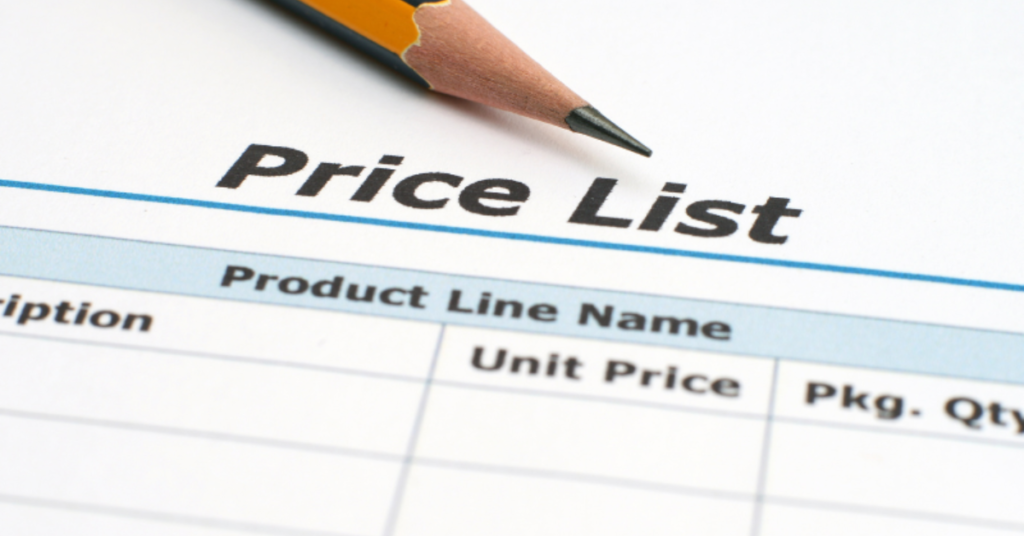How to decide if it’s time to raise your prices.

On this page:
- How to determine when it’s time to increase prices.
- The necessary steps for gaining internal buy-in and getting your entire team onboard.
- How to implement a price increase and communicate it effectively to your customers.
- The importance of optimizing your pricing strategy for long-term success.
As a leader, implementing a profitable price increase strategy without devaluing your brand or appearing greedy can be challenging. However, there are several strategies and tactics that you can use to increase your prices while maintaining customer satisfaction.
This article is a comprehensive guide detailing how to master a price increase. We’ll outline five effective steps and tips for any business considering increasing their prices to improve profitability.
Evaluating a price increase
Before raising prices, there are a few internal and external signs to consider when deciding it may be time for a price increase. You might see these indicators in your financial figures or simply as a necessary reaction to a changing business landscape, including:
- Insufficient margins
- Increasing vendor costs
- More demand than you can keep up with
Further, keeping an eye on the market and your competitors ensures that your pricing strategy aligns with broader market trends. Before considering a price increase, thoroughly analyze the market to understand where you stand. Compare your prices with your competitors and examine how their products or services stack up against yours.
External signs your prices are too low include:
- Customers ask why you’re so cheap compared with the rest of the competition
- Your products or services offer significantly higher value than your price would indicate
- You’re the most affordable on the market
Considering these factors will help you make an informed decision about whether and how much to increase prices and aid you in calculating the potential impact of a price increase on your bottom line. It’s a delicate balancing act between staying competitive and ensuring your business remains profitable. Fortunately, you can get it done successfully with careful planning, analysis, and communication.
Mastering internal communication
Your team needs to get on board before you can convince customers to pay a higher price for your goods or services. As the first point of customer contact, your team will need to respond to queries, concerns, and potentially unhappy customers.
Sales staff may also need to work harder to convince clients, especially if you’ve been able to compete mainly on price. Internal champions who can advocate for your cause and make sure your message gets heard will help smooth the price increase process. Prepare your sales and marketing teams for the new pricing structure and brainstorm ways to address potential pushback in advance.
Getting your internal communication right will ensure clear messaging to keep internal teams aligned and motivated and present a united front to the customer.
Communicating a price increase to customers
This part can be the most challenging aspect of raising your prices. To make the process run as smoothly as possible, carefully consider the timing of the announcement, the language used to deliver the news, and how to address any concerns or questions that may arise. If it’s been a while since you’ve adjusted prices, your customers may have gotten used to a specific price point.
Fortunately, careful use of incentives can minimize the hesitation and resistance that sometimes accompany a price increase. Whether it’s a discount on a future purchase or a free item, incentives show that you value and appreciate your customers’ business while acknowledging the impact of the increase. Effective communication is critical to maintaining positive relationships and customer satisfaction during a price increase.

Implement a price increase
It’s one thing to talk about raising prices, but implementing a price increase can be daunting. Careful planning and execution of the increase can lead to improved profits and growth for your company.
The first step is determining the new price point to meet your financial goals while still appealing to your target market. You can take several approaches; most involve benchmarking to your competitors or determining your internal cost per unit (including fixed costs) and adding a profit margin.
Once you have determined this, it’s crucial to test the new price point in a controlled environment to ensure that it is well-received by customers before rolling it out across all channels consistently. Many start with new prices for new customers, then select a segment of existing customers to test acceptance and ensure minimal impact to churn.
Finally, tracking your results is essential to optimizing your price increase and evaluating its success. With patience and attention to detail, a price increase can be a successful strategy for growing your top (and bottom) lines.
Optimizing your pricing strategy
Pricing is critical to your business strategy and often requires a delicate balance. There are a few key considerations to optimize your pricing strategy.
First and foremost, understanding your competitors’ pricing can be incredibly informative. Researching their prices can help you position yourself more competitively or target customers looking for different value propositions.
Additionally, experimenting with different pricing structures can help you find the right balance between profitability, customer satisfaction, and utilizing your available capacity. Finally, segmenting your customer base can empower you to create pricing structures that cater to the unique needs and desires of different customer groups.
With these strategies in mind, you’ll be better equipped to design a pricing strategy that helps you stay ahead of the competition and maximize your profits.
Is it time to raise your prices?
Implementing a successful price increase can provide a range of benefits to your business, including increased revenue and more efficient operations. The five critical steps outlined in this article help ensure that a price increase meets your financial objectives while maintaining customer loyalty:
- Assessing the need for a price increase
- Developing internal champions and communicating internally
- Communicating externally with customers
- Implementing the new pricing strategy across all channels
- Optimizing the pricing strategy
While this process may take some time and effort initially, ensuring your business reaches its maximum profitability will be worth it.
Price increase strategy FAQs
How can I minimize customer churn when implementing a price increase?
Offering incentives like discounts on future purchases or long-term contracts and free items shows that you value and appreciate your customers’ business while acknowledging the increase’s impact. Additionally, testing the new prices in a controlled environment can help ensure acceptance before consistently rolling it out across all channels.
What are some best practices for communicating a price increase to customers?
Consider the timing of the announcement, the language used to deliver the news, and how to address any concerns or questions that may arise. Effective communication helps ensure customer satisfaction and maintains a positive relationship with your audience.
How can I ensure that my sales team is prepared for the new pricing structure?
Internal communication that explains the justification to the sales team will help get them on board. Prepare your sales and marketing teams for the new pricing structure and brainstorm ways to address potential pushback in advance. Getting your internal communication right will help you show one face to the customer.
What factors should I consider when determining the timing of a price increase announcement?
Product lifecycle, seasonality of sales, and macroeconomic factors can all play critical roles in a price-increase notification. Additionally, it’s essential to consider what is happening in the industry and whether competitors are raising their prices. Careful timing will help encourage customer acceptance and maximize profits.
Is it better to raise prices incrementally or all at once?
Depending on the size of your change, it may be best to announce a series of incremental changes rather than one significant increase. This allows customers to adjust and get used to the new prices over time, minimizing potential resistance or customer loss.